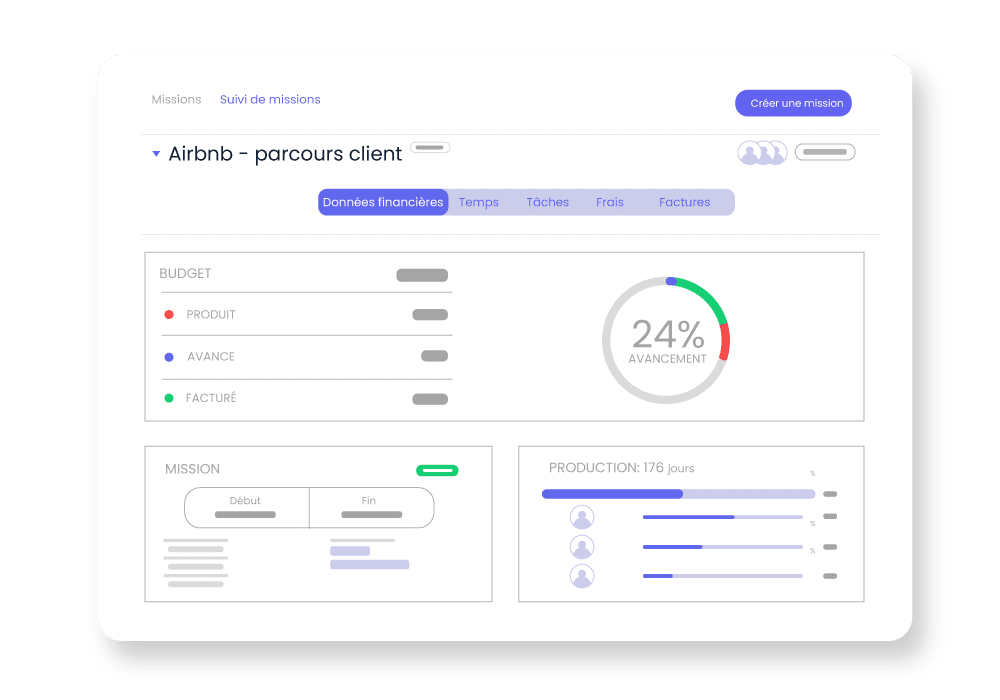Effective project governance in 6 steps

To scale their activities, companies have no other solution than to optimize the management of their projects. Improving day-to-day operations therefore becomes essential to gain competitiveness and conquer new markets.
This is where project governance comes in, not to be confused with project management, which is more limited in scope and stakes. Indeed, project governance involves the definition of procedures and establishes human and financial resources. As a result, it is positioned as an essential method for the sustainability of companies.
In this article, learn what project governance is, the challenges it represents, and the steps you can take to help you implement it in your organization.
What is Project Governance?
Project Governance: Definition
Defined by the business sociologist Jean-François Chantaraud (2012) as " the set of rules and methods organizing the reflection, the decision and the control of the application of decisions within a social body ", project governance remains in fact a method of management and organization.
Consisting of a set of processes, it defines the organization at the global level of the company. Project governance makes it possible to set up the right environment for the effective management of a project portfolio.
One of the main characteristics of project governance lies in its strategic dimension. Indeed, defining project governance implies taking a position in the strategic direction to be followed. Management teams then have a heavy responsibility: that of choosing projects that align with the company's overall strategy.
What is the Difference Between Governance and Project Management?
While project management and governance both involve the implementation of projects within a company, they differ in their dimension.
As project governance is a global methodology, it uses project management as a tool to achieve its strategic goals.

Diagram of a project governance
What is the Main Goal of Project Governance?
Guaranteeing a certain level of quality thanks to an efficient structuring and organization, project governance responds to real challenges. In addition, its implementation has many advantages.
Ensure Alignment from Operational to Strategy
Aligning projects with the company's strategy can be complex. However, the implementation of a precise project governance will make it possible to work on this coherence, while taking into account the company's development objectives .
In addition, project governance is particularly useful for reconciling the sometimes divergent interests of the different stakeholders of an organization.
Facilitate Decision-Making
The definition of project governance is based on concrete figures from the company's operational activities.
A reliable analytical vision will help provide all the necessary elements for informed decision-making. It should also be noted that this analysis must be based on relevant financial indicators to be defined strategically.
Optimize Resource Management
Resource management is a particularly complex issue to manage in companies. Indeed, the lack of visibility on availability sometimes complicates the smooth operational running of projects.
By defining project governance upstream, you will improve your long-term vision, which will allow you to better prioritize projects to be developed.
Ensuring Sustainability
While project governance represents a significant investment within a company as it requires the involvement of teams and management, its benefits are nevertheless significant.
The implementation of project governance contributes to the sustainability of the company in many ways:
- the smooth running of activities is facilitated,
- productivity is increased tenfold,
- profitability is increased,
- Autonomy is promoted, allowing you to retain your talents.
Improve Communication
Project governance helps to streamline the flow of information. This is because each role is defined in advance with transparency. Obtaining information becomes more accessible, as each employee knows perfectly well who to contact. Communication flows are thus simplified, and time savings considerable.
The creation of silos between the departments of the project teams and finance does not allow for optimal management of projects. Stafiz provides you with a solution through its project management control tools that allow you to reconcile finance and project management. In addition, the platform access rights, which are fully customizable, provide the right level of information to your various employees. Thus, everyone holds the keys to act at their own level.
Discover Stafiz's planning tool
Questions:
There are 5 models in project governance.
- Hierarchical governance: management and decisions are centralized by management. The operational teams receive and apply the instructions given by the hierarchy. This model is preferred in large companies, where a structured system facilitates production.
- Functional governance: management is in the hands of each business manager. As a result, each department controls its organization and resources. The project manager here plays the role of a coordinator. This mode of governance is to be preferred for companies that often face silos.
- Matrix governance: management is shared between the functional hierarchy and the project manager in order to balance expertise and operational priorities. This approach is commonly preferred by service companies.
- Participatory governance: all stakeholders are involved in steering at each milestone. This promotes transparency, collaboration, and consequently, commitment.
- Autonomous governance: project teams are self-organized, from decision-making to operations. It's an agile management.
The "3 Ps" of project governance refer to:
- project: all methods to ensure the proper execution of the missions,
- sustainability: the challenge of building a project governance that is long-term, designed to adapt to growth objectives and market developments,
- Profit: Ensure that projects are aligned to maximize the profitability of the business.
A project is profitable when it brings a return on investment, whether financial, strategic or organizational. Monitoring of the right indicators (margin, utilization rate sold, planned/realized variances) then allows us to judge precisely.



